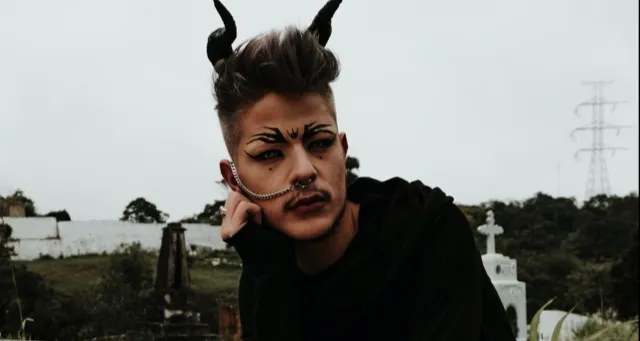
Queer Character Representation in Horror
This content contains affiliate links. When you buy through these links, we may earn an affiliate commission.
When one thinks horror, images of steamy sex scenes and explorations of sexuality don’t exactly spring to mind. We think blood, gore, monsters, unhinged slashers, and so on. More often than not we also think of straight, cisgender characters. The sexual tension is between straight characters. The couples in the woods on that ill-fated camping trip are straight. Well, possibly with the exception of the fifth wheel character who for whatever reason doesn’t have a date to the pending blood bath. The survivors are either the virginal female or a straight couple to sort of play on that Adam and Eve repopulating trope. As an openly queer horror fan it has grated on the nerves just a bit. I’ve pounded through tomes and short stories trying to find someone who reflects just a little bit more, a feat made more difficult by not having a binary sexuality.
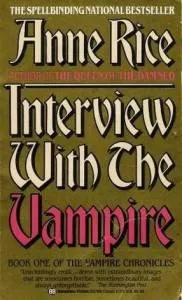 In the catalog of classic monsters, vampires seem to be the freest to explore their urges. Somehow charming the pants off someone to eat them turned to just charming the pants off them. Though by their own admission in the majority of stories the drinking is not sexual in and of itself, the pleasure is in the feeding both for the eater and the food. They aren’t really picky regarding the gender of their chosen food group. I mean really most don’t think of what gender their steak was. One could argue that Lestat and Louis are an early example of a gay couple adopting a child in Anne Rice’s Interview With the Vampire, but that’s about as close as we got with popular vampire media. The fanged undead are sexually ambiguous, rather than identifying as anything in particular.
In the catalog of classic monsters, vampires seem to be the freest to explore their urges. Somehow charming the pants off someone to eat them turned to just charming the pants off them. Though by their own admission in the majority of stories the drinking is not sexual in and of itself, the pleasure is in the feeding both for the eater and the food. They aren’t really picky regarding the gender of their chosen food group. I mean really most don’t think of what gender their steak was. One could argue that Lestat and Louis are an early example of a gay couple adopting a child in Anne Rice’s Interview With the Vampire, but that’s about as close as we got with popular vampire media. The fanged undead are sexually ambiguous, rather than identifying as anything in particular.
 When I came out in the ’90s there weren’t many characters like me to relate to, or if there were these souls were a caricature who ultimately died before the end of the novel or movie. They were also rarely to never the protagonist. So where did a young S.F. go to find queer representation in her horror novels? Into the literary arms of Clive Barker and Poppy Z. Brite. Barker has never shied away from gay representation in novels and short stories. He deftly sidesteps the tragic gay trope common in literature. There is neither shame, or an acknowledgement that their sexuality is anything other than normal. In his novel Sacrament our protagonist explores complex themes about life, love, extinction, preservation, and everything that goes along with it. While his homosexuality is a plot point it’s not the theme of the novel. He talks about the men he’s loved and lost as any straight character would discuss the loss of a love. It isn’t an aberration. It’s not strange, but discussed as if it were normal.
When I came out in the ’90s there weren’t many characters like me to relate to, or if there were these souls were a caricature who ultimately died before the end of the novel or movie. They were also rarely to never the protagonist. So where did a young S.F. go to find queer representation in her horror novels? Into the literary arms of Clive Barker and Poppy Z. Brite. Barker has never shied away from gay representation in novels and short stories. He deftly sidesteps the tragic gay trope common in literature. There is neither shame, or an acknowledgement that their sexuality is anything other than normal. In his novel Sacrament our protagonist explores complex themes about life, love, extinction, preservation, and everything that goes along with it. While his homosexuality is a plot point it’s not the theme of the novel. He talks about the men he’s loved and lost as any straight character would discuss the loss of a love. It isn’t an aberration. It’s not strange, but discussed as if it were normal.
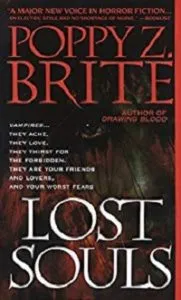 I picked up the works of Poppy Z. Brite before his transition. Billy Martin has opted to keep his nom de plume post-transition, and I can’t help but wonder if identifying as a gay man even before his transition helped to create a feeling of normalcy with his characters that I deeply needed. The novel Lost Souls introduced me to what would become one of my favorite continuing literary couples. Ghost and Steve grow into their relationship, and one could easily equate their adventures to the budding romance one would find in a rom-com. Though the world Steve and Ghost traverse is more blood soaked, and filled with teeth and claws than cute kitschy happenstance situations and long lingering glances over the copier. Steve has previous straight relationships to reflect on, and when he and Ghost finally get together it just makes sense. Brite writes complex flawed, and not so conventionally handsome characters.
Take his vampires in Lost Souls. They don’t have pointy fangs, they’re born into a species rather than turned by a bite and the swapping of blood, and his descriptions aren’t dripping in sex like those in Anne Rice’s Vampire Chronicles. The main vampire, Zillah, is androgynous rather than chiseled. His follower Molochai has a sweets addiction that leaves a film on his teeth, and he has round babyish features. Oh, they are still every inch as brutal as other literary blood suckers. They just aren’t painted in the virgin corrupting handsome straight light readers regularly encounters.
While defying beauty norms, they still attract partners and victims. When he writes sex scenes they are not steamy and passionate. They’re fumbling, sloppy and all the more real. For me in my formative young queer days, it helped to see characters like this reflecting normalcy even in a blood soaked vampire novel. It would be some years before I found The Gilda Stories by Jewelle Gomez where we find a runaway slave taken in by a vampire madam named Gilda and her brothel. Our protagonist is openly bisexual, and learns of love and life from the women working in the brothel.
I picked up the works of Poppy Z. Brite before his transition. Billy Martin has opted to keep his nom de plume post-transition, and I can’t help but wonder if identifying as a gay man even before his transition helped to create a feeling of normalcy with his characters that I deeply needed. The novel Lost Souls introduced me to what would become one of my favorite continuing literary couples. Ghost and Steve grow into their relationship, and one could easily equate their adventures to the budding romance one would find in a rom-com. Though the world Steve and Ghost traverse is more blood soaked, and filled with teeth and claws than cute kitschy happenstance situations and long lingering glances over the copier. Steve has previous straight relationships to reflect on, and when he and Ghost finally get together it just makes sense. Brite writes complex flawed, and not so conventionally handsome characters.
Take his vampires in Lost Souls. They don’t have pointy fangs, they’re born into a species rather than turned by a bite and the swapping of blood, and his descriptions aren’t dripping in sex like those in Anne Rice’s Vampire Chronicles. The main vampire, Zillah, is androgynous rather than chiseled. His follower Molochai has a sweets addiction that leaves a film on his teeth, and he has round babyish features. Oh, they are still every inch as brutal as other literary blood suckers. They just aren’t painted in the virgin corrupting handsome straight light readers regularly encounters.
While defying beauty norms, they still attract partners and victims. When he writes sex scenes they are not steamy and passionate. They’re fumbling, sloppy and all the more real. For me in my formative young queer days, it helped to see characters like this reflecting normalcy even in a blood soaked vampire novel. It would be some years before I found The Gilda Stories by Jewelle Gomez where we find a runaway slave taken in by a vampire madam named Gilda and her brothel. Our protagonist is openly bisexual, and learns of love and life from the women working in the brothel.
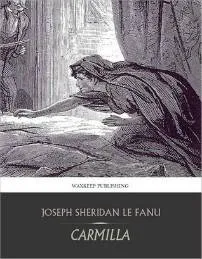 For the classics I gravitated to The Picture of Dorian Grey by Oscar Wilde, where the young Dorian delights in all manner of depravity in Victorian England. A mysterious figure offers him a portrait that will suffer the consequences for his actions, though he must not look upon it. Dorian is free to explore any desire and is not bound by lusting after women alone. This novel not only got Oscar Wilde arrested for defying public decency, it also got me through the Victorian literature unit in high school english. In Carmilla by Sheridan La Fanu, which predates Dracula, we see a charming young lady seduced by a female vampire. Carmilla makes blatant advances at our protagonist Laura, and Laura does not immediately rebuff the affection.
For the classics I gravitated to The Picture of Dorian Grey by Oscar Wilde, where the young Dorian delights in all manner of depravity in Victorian England. A mysterious figure offers him a portrait that will suffer the consequences for his actions, though he must not look upon it. Dorian is free to explore any desire and is not bound by lusting after women alone. This novel not only got Oscar Wilde arrested for defying public decency, it also got me through the Victorian literature unit in high school english. In Carmilla by Sheridan La Fanu, which predates Dracula, we see a charming young lady seduced by a female vampire. Carmilla makes blatant advances at our protagonist Laura, and Laura does not immediately rebuff the affection.
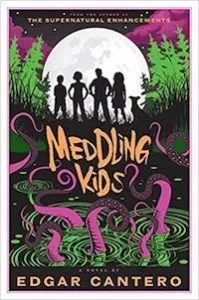 These days it’s getting a little easier for queer youth to find familiarity and representation. The romance genre is catching onto the need for queer representation, and the horror world is following suite. In Meddling Kids, Edgar Cantero paints a delightful picture of cosmic horror and comedy through the lens of an aged tween mystery group. What happens when the Hardy Boys grow up? How about the intrepid Mystery Incorporated Scooby-Doo gang? This one gives us the after, and flies in the face of standard tropes. Instead of the Danger-prone Daphne character, he gives us Andy Rodriguez, a brash butch Latina lesbian. And our jock-turned-actor-turned-ghost isn’t the love interest. Instead she rather sheepishly pursues our Velma-esque character, Kerri.
Times change in literature, as in all things. Ideals shift and morals grow and evolve. As social values have changed and opened up to include the queer community in all its wonderful colors of the rainbow, so too does fiction and horror. Queer characters are no longer caricatures and tragic tropes. They’re antagonists, protagonists, and friends, and can easily occupy any other role in a novel. Hero, sidekick, or villain, we are now getting a more realistic and relatable version of these characters.
These days it’s getting a little easier for queer youth to find familiarity and representation. The romance genre is catching onto the need for queer representation, and the horror world is following suite. In Meddling Kids, Edgar Cantero paints a delightful picture of cosmic horror and comedy through the lens of an aged tween mystery group. What happens when the Hardy Boys grow up? How about the intrepid Mystery Incorporated Scooby-Doo gang? This one gives us the after, and flies in the face of standard tropes. Instead of the Danger-prone Daphne character, he gives us Andy Rodriguez, a brash butch Latina lesbian. And our jock-turned-actor-turned-ghost isn’t the love interest. Instead she rather sheepishly pursues our Velma-esque character, Kerri.
Times change in literature, as in all things. Ideals shift and morals grow and evolve. As social values have changed and opened up to include the queer community in all its wonderful colors of the rainbow, so too does fiction and horror. Queer characters are no longer caricatures and tragic tropes. They’re antagonists, protagonists, and friends, and can easily occupy any other role in a novel. Hero, sidekick, or villain, we are now getting a more realistic and relatable version of these characters.
 In the catalog of classic monsters, vampires seem to be the freest to explore their urges. Somehow charming the pants off someone to eat them turned to just charming the pants off them. Though by their own admission in the majority of stories the drinking is not sexual in and of itself, the pleasure is in the feeding both for the eater and the food. They aren’t really picky regarding the gender of their chosen food group. I mean really most don’t think of what gender their steak was. One could argue that Lestat and Louis are an early example of a gay couple adopting a child in Anne Rice’s Interview With the Vampire, but that’s about as close as we got with popular vampire media. The fanged undead are sexually ambiguous, rather than identifying as anything in particular.
In the catalog of classic monsters, vampires seem to be the freest to explore their urges. Somehow charming the pants off someone to eat them turned to just charming the pants off them. Though by their own admission in the majority of stories the drinking is not sexual in and of itself, the pleasure is in the feeding both for the eater and the food. They aren’t really picky regarding the gender of their chosen food group. I mean really most don’t think of what gender their steak was. One could argue that Lestat and Louis are an early example of a gay couple adopting a child in Anne Rice’s Interview With the Vampire, but that’s about as close as we got with popular vampire media. The fanged undead are sexually ambiguous, rather than identifying as anything in particular.
 When I came out in the ’90s there weren’t many characters like me to relate to, or if there were these souls were a caricature who ultimately died before the end of the novel or movie. They were also rarely to never the protagonist. So where did a young S.F. go to find queer representation in her horror novels? Into the literary arms of Clive Barker and Poppy Z. Brite. Barker has never shied away from gay representation in novels and short stories. He deftly sidesteps the tragic gay trope common in literature. There is neither shame, or an acknowledgement that their sexuality is anything other than normal. In his novel Sacrament our protagonist explores complex themes about life, love, extinction, preservation, and everything that goes along with it. While his homosexuality is a plot point it’s not the theme of the novel. He talks about the men he’s loved and lost as any straight character would discuss the loss of a love. It isn’t an aberration. It’s not strange, but discussed as if it were normal.
When I came out in the ’90s there weren’t many characters like me to relate to, or if there were these souls were a caricature who ultimately died before the end of the novel or movie. They were also rarely to never the protagonist. So where did a young S.F. go to find queer representation in her horror novels? Into the literary arms of Clive Barker and Poppy Z. Brite. Barker has never shied away from gay representation in novels and short stories. He deftly sidesteps the tragic gay trope common in literature. There is neither shame, or an acknowledgement that their sexuality is anything other than normal. In his novel Sacrament our protagonist explores complex themes about life, love, extinction, preservation, and everything that goes along with it. While his homosexuality is a plot point it’s not the theme of the novel. He talks about the men he’s loved and lost as any straight character would discuss the loss of a love. It isn’t an aberration. It’s not strange, but discussed as if it were normal.
 I picked up the works of Poppy Z. Brite before his transition. Billy Martin has opted to keep his nom de plume post-transition, and I can’t help but wonder if identifying as a gay man even before his transition helped to create a feeling of normalcy with his characters that I deeply needed. The novel Lost Souls introduced me to what would become one of my favorite continuing literary couples. Ghost and Steve grow into their relationship, and one could easily equate their adventures to the budding romance one would find in a rom-com. Though the world Steve and Ghost traverse is more blood soaked, and filled with teeth and claws than cute kitschy happenstance situations and long lingering glances over the copier. Steve has previous straight relationships to reflect on, and when he and Ghost finally get together it just makes sense. Brite writes complex flawed, and not so conventionally handsome characters.
Take his vampires in Lost Souls. They don’t have pointy fangs, they’re born into a species rather than turned by a bite and the swapping of blood, and his descriptions aren’t dripping in sex like those in Anne Rice’s Vampire Chronicles. The main vampire, Zillah, is androgynous rather than chiseled. His follower Molochai has a sweets addiction that leaves a film on his teeth, and he has round babyish features. Oh, they are still every inch as brutal as other literary blood suckers. They just aren’t painted in the virgin corrupting handsome straight light readers regularly encounters.
While defying beauty norms, they still attract partners and victims. When he writes sex scenes they are not steamy and passionate. They’re fumbling, sloppy and all the more real. For me in my formative young queer days, it helped to see characters like this reflecting normalcy even in a blood soaked vampire novel. It would be some years before I found The Gilda Stories by Jewelle Gomez where we find a runaway slave taken in by a vampire madam named Gilda and her brothel. Our protagonist is openly bisexual, and learns of love and life from the women working in the brothel.
I picked up the works of Poppy Z. Brite before his transition. Billy Martin has opted to keep his nom de plume post-transition, and I can’t help but wonder if identifying as a gay man even before his transition helped to create a feeling of normalcy with his characters that I deeply needed. The novel Lost Souls introduced me to what would become one of my favorite continuing literary couples. Ghost and Steve grow into their relationship, and one could easily equate their adventures to the budding romance one would find in a rom-com. Though the world Steve and Ghost traverse is more blood soaked, and filled with teeth and claws than cute kitschy happenstance situations and long lingering glances over the copier. Steve has previous straight relationships to reflect on, and when he and Ghost finally get together it just makes sense. Brite writes complex flawed, and not so conventionally handsome characters.
Take his vampires in Lost Souls. They don’t have pointy fangs, they’re born into a species rather than turned by a bite and the swapping of blood, and his descriptions aren’t dripping in sex like those in Anne Rice’s Vampire Chronicles. The main vampire, Zillah, is androgynous rather than chiseled. His follower Molochai has a sweets addiction that leaves a film on his teeth, and he has round babyish features. Oh, they are still every inch as brutal as other literary blood suckers. They just aren’t painted in the virgin corrupting handsome straight light readers regularly encounters.
While defying beauty norms, they still attract partners and victims. When he writes sex scenes they are not steamy and passionate. They’re fumbling, sloppy and all the more real. For me in my formative young queer days, it helped to see characters like this reflecting normalcy even in a blood soaked vampire novel. It would be some years before I found The Gilda Stories by Jewelle Gomez where we find a runaway slave taken in by a vampire madam named Gilda and her brothel. Our protagonist is openly bisexual, and learns of love and life from the women working in the brothel.
 For the classics I gravitated to The Picture of Dorian Grey by Oscar Wilde, where the young Dorian delights in all manner of depravity in Victorian England. A mysterious figure offers him a portrait that will suffer the consequences for his actions, though he must not look upon it. Dorian is free to explore any desire and is not bound by lusting after women alone. This novel not only got Oscar Wilde arrested for defying public decency, it also got me through the Victorian literature unit in high school english. In Carmilla by Sheridan La Fanu, which predates Dracula, we see a charming young lady seduced by a female vampire. Carmilla makes blatant advances at our protagonist Laura, and Laura does not immediately rebuff the affection.
For the classics I gravitated to The Picture of Dorian Grey by Oscar Wilde, where the young Dorian delights in all manner of depravity in Victorian England. A mysterious figure offers him a portrait that will suffer the consequences for his actions, though he must not look upon it. Dorian is free to explore any desire and is not bound by lusting after women alone. This novel not only got Oscar Wilde arrested for defying public decency, it also got me through the Victorian literature unit in high school english. In Carmilla by Sheridan La Fanu, which predates Dracula, we see a charming young lady seduced by a female vampire. Carmilla makes blatant advances at our protagonist Laura, and Laura does not immediately rebuff the affection.
 These days it’s getting a little easier for queer youth to find familiarity and representation. The romance genre is catching onto the need for queer representation, and the horror world is following suite. In Meddling Kids, Edgar Cantero paints a delightful picture of cosmic horror and comedy through the lens of an aged tween mystery group. What happens when the Hardy Boys grow up? How about the intrepid Mystery Incorporated Scooby-Doo gang? This one gives us the after, and flies in the face of standard tropes. Instead of the Danger-prone Daphne character, he gives us Andy Rodriguez, a brash butch Latina lesbian. And our jock-turned-actor-turned-ghost isn’t the love interest. Instead she rather sheepishly pursues our Velma-esque character, Kerri.
Times change in literature, as in all things. Ideals shift and morals grow and evolve. As social values have changed and opened up to include the queer community in all its wonderful colors of the rainbow, so too does fiction and horror. Queer characters are no longer caricatures and tragic tropes. They’re antagonists, protagonists, and friends, and can easily occupy any other role in a novel. Hero, sidekick, or villain, we are now getting a more realistic and relatable version of these characters.
These days it’s getting a little easier for queer youth to find familiarity and representation. The romance genre is catching onto the need for queer representation, and the horror world is following suite. In Meddling Kids, Edgar Cantero paints a delightful picture of cosmic horror and comedy through the lens of an aged tween mystery group. What happens when the Hardy Boys grow up? How about the intrepid Mystery Incorporated Scooby-Doo gang? This one gives us the after, and flies in the face of standard tropes. Instead of the Danger-prone Daphne character, he gives us Andy Rodriguez, a brash butch Latina lesbian. And our jock-turned-actor-turned-ghost isn’t the love interest. Instead she rather sheepishly pursues our Velma-esque character, Kerri.
Times change in literature, as in all things. Ideals shift and morals grow and evolve. As social values have changed and opened up to include the queer community in all its wonderful colors of the rainbow, so too does fiction and horror. Queer characters are no longer caricatures and tragic tropes. They’re antagonists, protagonists, and friends, and can easily occupy any other role in a novel. Hero, sidekick, or villain, we are now getting a more realistic and relatable version of these characters.




